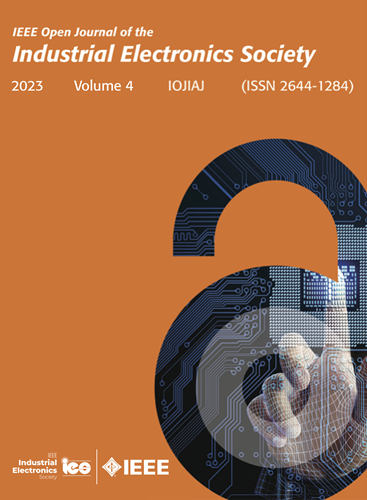A Single-Loop Active Disturbance Rejection Control of PMSG for Suppressing Subsynchronous Resonance
IF 7.2
1区 工程技术
Q1 AUTOMATION & CONTROL SYSTEMS
引用次数: 0
Abstract
Under weak grid, permanent magnetic synchronous generator (PMSG) is prone to occur subsynchronous resonance (SSR), which seriously threatens the security of power systems. First, the mechanism and characteristics of this SSR are analyzed based on the impedance method. As the decrease of grid stiffness, the PMSG will oscillate due to the impedance interaction between the inductive grid impedance and the capacitive PMSG impedance in the low-frequency range. To suppress this SSR, a single-loop active disturbance rejection control (ADRC) of the PMSG grid-side converter (GSC) is proposed, which consists of two different single-loop controllers of the d- and q-axis. Meanwhile, a differential feedforward control is applied to reduce the tracking error of linear extended state observer. Under the proposed control, the impedance of PMSG no longer has capacitive characteristics, which will not cause impedance resonance with the weak grid. Compared with the voltage and current dual loop ADRC, the proposed single-loop ADRC directly adjust dc-side voltage of GSC with considering ac-side current, which can improve the dynamic and steady-state performance of the PMSG. Finally, the effectiveness of the proposed SSR suppression method is verified by the simulation and experimental study.用于抑制亚同步共振的 PMSG 单回路主动干扰抑制控制装置
在弱电网条件下,永磁同步发电机易发生次同步谐振,严重威胁着电力系统的安全运行。首先,基于阻抗法分析了该SSR的机理和特性。随着栅格刚度的降低,在低频范围内,由于栅格电感阻抗与电容阻抗的相互作用,PMSG会产生振荡。为了抑制这种SSR,提出了一种PMSG电网侧变换器的单环自抗扰控制(ADRC),该控制由d轴和q轴两个不同的单环控制器组成。同时,采用微分前馈控制减小了线性扩展状态观测器的跟踪误差。在此控制下,PMSG的阻抗不再具有容性特性,不会与弱电网产生阻抗共振。与电压电流双环自抗扰相比,本文提出的单环自抗扰在考虑交流侧电流的情况下直接调节GSC的直流侧电压,提高了PMSG的动态和稳态性能。最后,通过仿真和实验研究验证了所提出的SSR抑制方法的有效性。
本文章由计算机程序翻译,如有差异,请以英文原文为准。
求助全文
约1分钟内获得全文
求助全文
来源期刊

IEEE Transactions on Industrial Electronics
工程技术-工程:电子与电气
CiteScore
16.80
自引率
9.10%
发文量
1396
审稿时长
6.3 months
期刊介绍:
Journal Name: IEEE Transactions on Industrial Electronics
Publication Frequency: Monthly
Scope:
The scope of IEEE Transactions on Industrial Electronics encompasses the following areas:
Applications of electronics, controls, and communications in industrial and manufacturing systems and processes.
Power electronics and drive control techniques.
System control and signal processing.
Fault detection and diagnosis.
Power systems.
Instrumentation, measurement, and testing.
Modeling and simulation.
Motion control.
Robotics.
Sensors and actuators.
Implementation of neural networks, fuzzy logic, and artificial intelligence in industrial systems.
Factory automation.
Communication and computer networks.
 求助内容:
求助内容: 应助结果提醒方式:
应助结果提醒方式:


